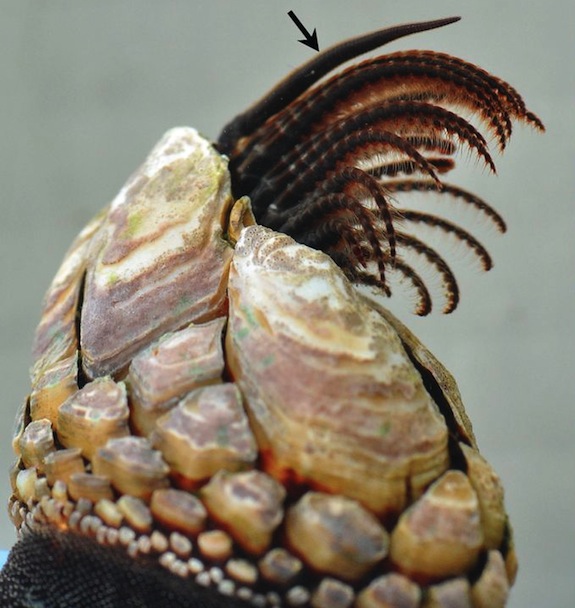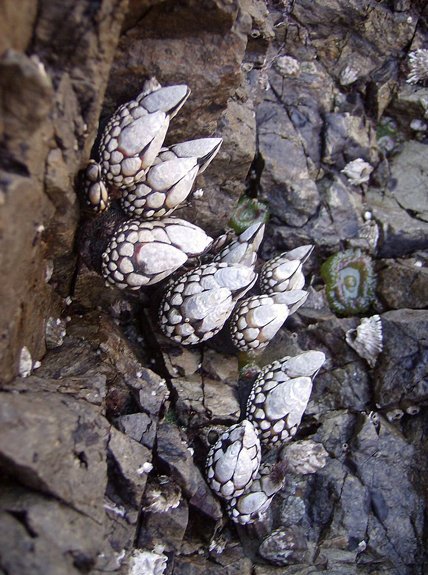Researchers Discover New Method of Barnacle Sex
Upending 150 years of theory, scientists observed that some barnacles can capture sperm from the water for reproduction
![]()

The gooseneck barnacle (with a relaxed penis at arrow) is capable of a method of sex previously unobserved in barnacles, upending 150 years of theory. Image via Barazandeh, et al. Proc. R. Soc. B.
Barnacles are renowned for the size of their penises. The strange-looking creatures, which live inside shells glued to rocks or boat hulls, have outsized members that are among the longest in the animal kingdom relative to their size—their penises can stretch up to eight times their body length. Barnacles can even change the size and shape of their penis depending on the amount of wave action in their ocean real estate.
Perhaps this is why the sex lives of barnacles have long been of interest to scientists—luminaries such as Darwin, among others, closely studied the subject. Until recently, though, scientists recognized just two methods of reproduction in the species, and both left unanswered questions.
Pseudo-copulation, in which the penis enters a neighboring barnacle’s shell and deposits sperm, has been observed, but this method restricts them to reproducing only with others in their vicinity. Scientists have also observed that individual barnacles with no neighbors can reproduce, and they assumed this was accomplished through self-fertilization, because most barnacles are hermaphrodites.

Gooseneck barnacles (Pollicipes polymerus) taken at Limekiln Point on San Juan Island. Photo: Biriwilg, Wikimedia Commons
Now, though, researchers at the University of Alberta, Edmonton and Bamfield Marine Sciences Centre in British Columbia seem to have discovered a new reproduction method while studying the gooseneck barnacle (Pollicipes polymerus), upending more than 150 years of theory. Previously, the researchers had noticed that in other studies of the gooseneck barnacle, self-fertilization was never observed. They also saw sperm leaking from the barnacles in the field, which made them consider the possibility that barnacles could pick up sperm from the water.
In the study, the scientists collected gooseneck barnacles—both isolated and in pairs—along with their fertilized eggs from Barkley Sound in British Columbia to take back to the lab so they could genetically analyze the paternal combinations. The DNA of the fertilized eggs revealed that none of the isolated barnacles had produced embryos through self-fertilization—so one hundred percent of these eggs must have been fertilized by capturing sperm from the water.
Surprisingly, though, even some of the barnacles that resided in pairs had embryos that had been fertilized with sperm from a non-neighbor. This left one possibility: that the barnacles release their sperm into the ocean and let the water carry it to distant neighbors. This type of fertilization has been observed in other marine animals that can’t or don’t move, but it was always assumed that barnacles can’t reproduce in this way.
The authors point out that this mode of reproduction may be unusually common in this particular barnacle species because of the small size of their penis—but the fact that this phenomenon occurs at all opens the door to re-thinking the biology of these creatures. Other barnacle species might also have more mating options, with fathers coming from farther afield than previously thought.
Learn more about the ocean from the Smithsonian’s Ocean Portal.
